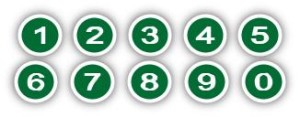I was working with someone recently who wants to start a blog, but is concerned about having enough content. “How do you come up with ideas to blog about  consistently?” she asked. We talked about a few strategies for having consistent blog material, but I decided to share my best one, which is actually one of the simplest.
consistently?” she asked. We talked about a few strategies for having consistent blog material, but I decided to share my best one, which is actually one of the simplest.
Here is the strategy, summed up in one sentence:
Keep a list.
It really is that simple, but there are some caveats that make it really work.
First, keep your list on your computer in an easy-to-access format and location. If you’re a big fan of paper, you could use paper but the computer works better because of the ability to change, add and remove things as well as the ability to back up your list. You might start with one idea, and that one idea spawns off several other ideas. By keeping them together, you’ll have the makings for a series. You can use a spreadsheet, document or list-making software, just make sure it’s something you love to use. The list should be kept in a way that removes all barriers from using it regularly. If you want to use paper, make sure you use something nice that inspires you to update your list. Don’t use random scraps, and keep it all in one place.
Second, use your list. This is the one and only place blog ideas should be stored. Every time you have an idea, put it here. If you’re not near your list when you get an idea, make sure to capture it so you can add it later. Be ready to grab an idea wherever you are: dictate a voice note to yourself, send yourself an email, call your voicemail, even jot it down on a piece of paper you know you will deal with later.
Third, cross off or strikethrough ideas once you’ve used them but don’t remove them from the list. Someday, that already-used idea might trigger a new one, and you’ll have a sense of what you’ve written about.
Why does this simple strategy work?
By having an inventory of blog topics, you’ll be under no pressure when it’s time to write a post. Having a system to capture and store ideas allows your mind to work at your leisure, not under fire. It capitalizes on your awareness, i.e. by creating a system you’ve created a new area of focus for your mind. Did you ever have the experience of a friend buying a new car in a model you’ve never heard of and all of the sudden you see that car everywhere? It’s the same idea – creating a concrete system to store blog ideas helps focus you on those ideas and you’ll see them more often.
Do you keep a running list of blog topics? How does it help your blogging?







